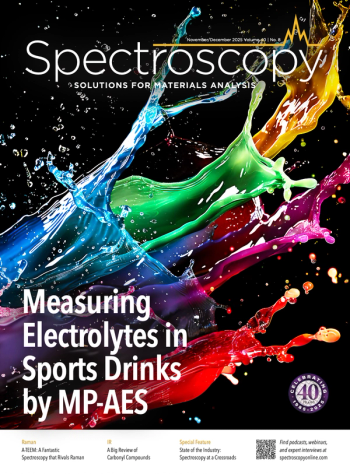
Analyzing Geological Targets Using Laser-Induced Sparks on Mars
In a recent study, researchers analyzed the correlation between laser-induced breakdown spectroscopy (LIBS) and acoustic signals captured by the microphone (MIC) on NASA's Perseverance rover during its mission on Mars.
NASA's Perseverance rover is equipped with SuperCam, which has the ability to characterize samples from a distance using various techniques. It is currently doing this through its exploration of the Jezero crater on Mars. One of these techniques being used is laser-induced breakdown spectroscopy (LIBS), which provides insights into the chemical composition of the target materials (1).
The rover also has sound detection capabilities through its microphone. It can capture the acoustic signals produced by the laser-induced plasma, complementing the spectroscopic data (1). Spectrochimica Acta Part B: Atomic Spectroscopy published a new study that focused on the analysis of the correlation between the LIBS and MIC signals during the first 380 sols (Martian days) of Perseverance's mission (1).
The study found that the acoustic signals captured by the microphone were louder and more stable when interacting with rocks that had compact surfaces and harder mineral phases, indicating a lower presence of loose particulate material (1). These findings provided valuable insights into the behavior of laser-produced plasma acoustics and its interpretation alongside LIBS data. Researchers wanted to gain a better understanding of the probed rocks and expand the information obtained from the Martian samples (1). The research team accomplished this by synchronizing the acoustic signals with the spectroscopic measurements that were collected (1).
This study is the first of its kind. It is the first study that provides a description of the behavior of shockwave intensity in the time domain, originating from laser-produced plasmas on geological targets recorded on Mars (1). These acoustic signals are expected to contain unique physicochemical signatures associated with the sampled positions. As the researchers unveil the dependence of the acoustic signals on the sample composition, provided by LIBS analysis, the sound produced by the sparks becomes a powerful tool for identifying mineral phases with similar optical emission spectra (1).
Using LIBS and acoustic analysis together was the unique feature of this study. Researchers, by combining both analyses together, opened new possibilities for space exploration and analyzing geological materials without being physically present on the surface (1). The findings from Perseverance's mission and the SuperCam's advanced capabilities increased our knowledge of the Martian geology. More studies into this field are expected, as space exploration remains a topic of great interest in the scientific community.
As the exploration of Mars continues, researchers will continue to analyze Martian rocks. Now that researchers know they can leverage the integration of spectroscopic and acoustic techniques to learn more about the planet's geological formations, which is essential if future technological advancements will help us realize Martian exploration.
Reference
(1) Alvarez-Llamas, C.; Laserna, J.; et al.The sound of geological targets on Mars from the absolute intensity of laser-induced sparks shock waves. Spectrochimica Acta Part B: At. Spectrosc. 2023, 205, 106687. DOI:
Newsletter
Get essential updates on the latest spectroscopy technologies, regulatory standards, and best practices—subscribe today to Spectroscopy.


